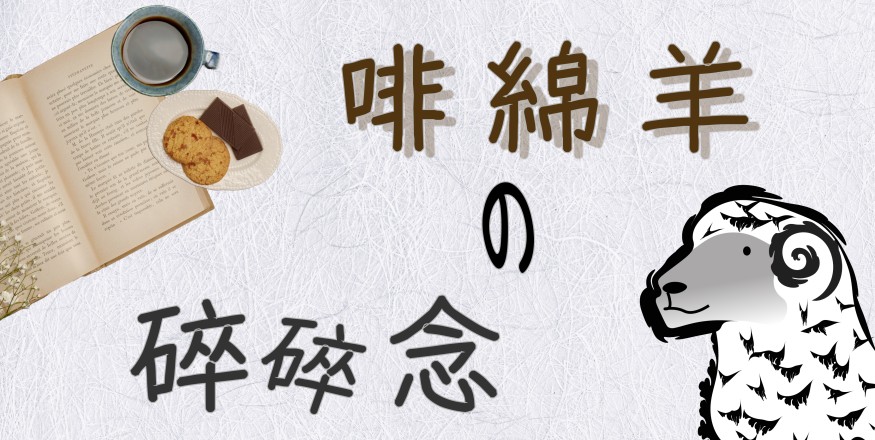【原文:英】
The Elements of Urban Planning Ethos in Taiwan
21.05.2021
Taiwan (Republic of China; ROC) is a country in East Asia. Historically, it was under the supervisions of Qing Dynasty, an ancient Mainland China regime, and Imperial Japan (Lang, 1958; Wu, 2010). After WWII, the ROC government regained the control of Taiwan from Japan; however, it lost the civil war of China in Mainland and retreated to Taiwan as her last base. As such, the urban development of Taiwan uniquely influenced by her colonial contexts in the way that shaped her urban spatial patterns. This article delineates how the management of colonial heritage and urban informality as the Taiwanese planning ethos shapes the contemporary Taiwan cities.
Planning Ethos 1: Developing from and Wiping Colonial Endowments
On the one hand, Imperial Japan industrialised and urbanised Taiwan in a well-planned and modernised manner, such that the contemporary urban setting has still being influenced by the planning layout established in the colonial period. Cheng (as cited in Wong et al., 2005) expresses that the major cities, including Kaohsiung, Tainan and Taipei, inherited the urban network planning during the Japanese Occupation. For example, referring to figure 1, the spatial syntax of contemporary Taipei City has a similar pattern to that in the colonial period. It demonstrates the succeeding political entities (i.e. the ROC government) attempt to utilise the efficacious planning framework and in-built infrastructures by the previous coloniser. In that the urban endowments, of which Imperial Japan was yet an inevitable feud of ROC, were per se superiorly conducive, the ROC authorities exemplified their mindset of utilitarianist planning, adopting urban policies whichever induce the most advantageous outcome regardless its possible moral impacts, such as that raised from Chauvinism.
On the other hand, nominal decolonisation was observable after regaining the control of Taiwan by the ROC government, such that the colonial history was seemingly downplayed. Lee (2020) upholds that the ROC government in the 20th-century attempted to restore indigenous (Chinese) traditions by replacing Japanese-style street and town names with politically-oriented ones, such as “Minzu West Road” (“Minzu” refers to one of the element of civic nationalism in Tridemism, the cornerstone of the political philosophy of ROC (Sun, 2011)). It shows the ROC government endeavoured for eradicating explicit colonial elements to validate the legitimacy of its leadership. The political concerns, including enhancing social cohesion from alleviating the belongingness of indigenous Taiwanese to Japanese rule, thereby facilitated superficial decolonisation in urban policies. Rather than executing holistic city redevelopment, minor and symbolic changes in planning were implemented to achieve the purposes of both political propaganda and practical planning.
In short, although the contemporary Taiwanese planning ethos seemingly upholds for removing the features of colonisation in urban settings, it adopts utilitarianist planning to functionally inherent and exploit the established benefit of urban basis from the previous colonial regime.
Planning Ethos 2: Urban Informality as Attraction
In contrast to the commonplace of urban decentralisation in Western metropolises, Taiwan cities, as if other Eastern nations, incline to be more compact and excessive mixed land uses due to local preferences and historical developments. After the defeat of the Chinese Civil War in 1949, the ROC government evacuated and rebased in Taiwan. However, it had little intention to prosper the “temporary headquarter”, as the leading class believed that the retreat to Mainland China was possible in short-run (Dickson, 1993). Taiwanese cities thereby remained unplanned and chaotic urban informality, such that the urban form of residence-commercial mixed use was robust. Notwithstanding that Taiwan subsequently experienced rapid economic growth in 1970s, the civilians have accustomed to the benefits of the urban informality from trendy mixed land use (Huang & Hsieh, 2014), and thence it turned as a part of “Taiwan’s urban cultural characters” (Chen et al., 2020, p. 10).
Hence, the ROC government utilises the informality as the enrichment of urban competitiveness in terms of living quality and tourism (Chien, 2018). For instance, snack stalls were commonplace on roadside in the city, while the authorities manage to attract and consolidate those hawkers at planned night markets for both tourists and the locals. It shows that the Taiwanese planning does not necessarily treat urban informality as a stain of the
By revitalising and moderately intervening the informalities, reciprocal benefits in terms of cultural inheritance (hawkers’ culture) and urban aesthetic are achievable. Instead of thoroughly obliterating historical urban informality, the Taiwanese planning ethos guides the transformation of such informality as a part of urban attractions.
Conclusion
To conclude, Taiwan is highly influenced from her colonial history and postwar economic miracle, such that her characteristics of the urban planning contain localised elements in terms of the cultural and historical factors. Based on the urban advancement established in the colonial period and the utilisations of the urban informality, the authorities managed to plan and institute vigorous cities in the East.
References
Chen, T. L., Chiu, H. W., & Lin, Y. F. (2020). How do East and Southeast Asian Cities Differ from Western Cities? A Systematic Review of the Urban Form Characteristics. Sustainability, 12(6), 2423.
Cheng, C. F. (2005). A study on the transition of urban context of traditional walled cities in Taiwan (1684-1937). Unpublished master thesis, Department of Architecture, Chung Yuan Christian University.
Chien, K. H. (2018). Entrepreneurialising urban informality: Transforming governance of informal settlements in Taipei. Urban Studies, 55(13), 2886-2902.
Dickson, B. J. (1993). The lessons of defeat: The reorganization of the Kuomintang on Taiwan, 1950-52. China Quarterly, 56-84.
Huang, S. W., & Hsieh, H. I. (2014). The study of the relationship between accessibility and mixed land use in Tainan, Taiwan. International Journal of Environmental Science and Development, 5(4), 352.
Koudai Chihchih Wushih Mieh (2017). a sponge cake stall in Tainan City. Tainan Sponge Cake in Central-West District. https://etaiwan.blog/700-egged-pancakes
Lang, S. (1958). Taiwan Jiu Fu Shu. In Jing Hai JiShi (p. 44). essay, The Bank of Taiwan.
Lee, Y. (2020). Taipei and Seoul’s Modern Urbanization under Japanese Colonial Rule: A Comparative Study from the Present-Day Context. Sustainability, 12(11), 4772.
Liberty Times Net. (2020). The Streetscape of Ning Sia Night Market in Taipei City. Ning Sia Night Market. https://news.ltn.com.tw/news/life/paper/1376787
OpenStreetMap. (2021).[Map of Taipei City]. Retrieved April 25, 2021 from https://www.openstreetmap.org/#map=12/25.0618/121.5084
Sun, Y. S. (2011). Tridemism. Bai Nian Qian Shu.
teldap.tw. (2014). the map of streets and parks in 1939 Taipei City Plan. The Related Maps of Taipei City Planning in Japanese Occupation Period. http://gis.rchss.sinica.edu.tw/mapdap/?p=5652&lang=zh-tw/
Wu, P. S. (2010). Walking in colonial Taiwan: a study on urban modernization of Taipei, 1895-1945. Journal of Asian Architecture and Building Engineering, 9(2), 307-314.
Epilogue:
ns3.135.236.62da2This article was written three years ago when I was still pursuing Master of Planning in Australia, namely. I randomly picked this piece which was scored 79 out of 100. It was quite a tragic moment in my life, as I decided to quit due to the pandemic after having six months of comprehensive online learning experience.






















